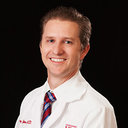Progressive mucosal injury in patients with gastroesophageal reflux disease and increasing peripheral blood eosinophil counts.
Mots clés
Abstrait
OBJECTIVE
Peripheral blood eosinophil count increases with the degree of mucosal injury associated with gastroesophageal reflux disease (GERD).
METHODS
Retrospective review.
METHODS
Single-institution tertiary hospital.
METHODS
Two hundred ninety-five patients (215 men and 80 women; median age, 57 years [interquartile range (IQR), 46-66 years]). One hundred had GERD without intestinal metaplasia, 100 had GERD with intestinal metaplasia, 40 had GERD with dysplasia, and 55 had GERD with intramucosal carcinoma. Results of complete blood count with differential and serum chemistry studies were compared among the groups using a nonparametric test for trend.
RESULTS
Patients with a higher degree of mucosal injury were older (P < .001). There were no differences between white blood count, percent neutrophil count, absolute neutrophil count, and hematocrit levels among the groups. Serum albumin level decreased as the degree of mucosal injury increased (P = .04) but lost significance when controlled for age (P = .53). Percent eosinophil counts were 2.0 (IQR, 1.3-2.8) in patients with GERD without intestinal metaplasia, 2.5 (IQR, 1.6-3.7) in GERD with intestinal metaplasia, 2.6 (IQR, 1.7-4.4) in GERD with dysplasia, and 2.7 (IQR, 1.5-4.3) in GERD with intramucosal carcinoma. This progressive increase in the percent eosinophil count was statistically significant (P = .006), remained significant after controlling for age (P = .04), and was also significant when measuring the absolute eosinophil count.
CONCLUSIONS
There is a progressive increase in the percent and absolute peripheral blood eosinophil count associated with progressive mucosal injury in patients with GERD.




